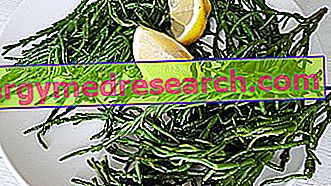What is Culatello?
Culatello is a cured but not minced pork salami. It is a very precious salted meat, typical of the lower Parma area, in particular in the area between Zibello and Langhirano (strip located on the bank of the Po river); here, the particular microclimate and traditional craftsmanship guarantee quality and typicality that are difficult to reproduce elsewhere.
Culatello di Zibello is a food with Protected Designation of Origin (DOP).
Nutritional Features

The nutritional characteristics do not vary much according to the type of culatello; this is due to the fact that, since they are pieces obtained from similar animals and being produced in one well-delimited area, they undergo more or less identical processing and aging.
Due to the high concentration of sodium, the culatello becomes unsuitable for the diet of the subject suffering from hypertension; moreover, due to the sensitive presence of saturated fatty acids and cholesterol, it seems impertinent even in the diet of the hypercholesterolemic. On the other hand, comparing its intake of saturated fatty acids and cholesterol with that of many other cured meats, culatello (as well as bresaola and defatted cured ham) is certainly one of the least contraindicated.
The energy supply of the culatello is not excessive but neither is it negligible, therefore it is difficult to contextualize in the low-calorie diet against overweight.
As regards the presence of other mineral salts (in addition to sodium), the culatello should be rich in iron; therefore, in the diet of the healthy person (and especially of the fertile woman), it represents a valid alternative to fresh meat, fresh fish and eggs, for the maintenance of the right levels of sideremia. Phosphorus and potassium concentrations should not be disappointed either.
With regard to vitamins, culatello should boast good concentrations of thiamine (vit. B1) and niacin (vit. PP).
What makes the culatello similar to other raw cured meats is the non-fitness for the pregnant woman. In this circumstance, to safeguard the safety of the unborn child, food hygiene is fundamental to say the least; therefore, since it is necessary to prevent both parasites and food poisoning, culatello (being raw) is generally excluded.
Nutritional values culatelloFor 100g | ||
| Power | kcal | 198.0 |
| kj | 828.0 | |
| Protein | g | 19.74 |
| Lipids | g | 12:58 |
| Carbohydrates | g | 0.0 |
| fibers | g | 0.0 |
Gastronomic aspects
Culatello is a salami that lends itself to the filling of soft focaccias, as long as they are simple and free of "strong" flavor ingredients. It is not uncommon for it to be accompanied with curls of butter to be placed on hot bread.
Culatello also goes perfectly with pickled vegetables (like a gardener), better if homemade, not too acidic and with a delicate liquid. Mayonnaise is recommended only if homemade.
Someone prefers to veil the slices of salami with aged balsamic vinegar. Other times the culatello is accompanied by flakes of Parmesan cheese (Parmigiano Reggiano or Grana Padano) or robiola (more rarely in the form of fondues); in this case, the sprinkling is lent with chopped chives and aglina.
Culatello is not recommended for stuffing piadine, tigelle or crescentine, in which it is better to use flakes or raw ham (less delicate and more intense).
Among the fruits suggested in combination, we especially remember figs and walnuts; some taste culatello also with melon.
More particularly, however, is the dressing of the salami with a few drops of Nocino sauce and balsamic vinegar, pumpkin cooked in butter and garlic-free sautéed mushrooms (pioppini, finferli or porcini).
An evening meal consisting of a few slices of culatello, accompanied by a pinzimonio of fresh vegetables and a "rosetta" of wholemeal bread, is a good way to bring health, fitness and palate into harmony.
Tips for the Consumption of Culatello
To consume the culatello at the most of its organoleptic and gustatory potential, it is necessary to take some precautions.
First of all, the culatello must be kept in a dark, cool and dry place; exposure (even short) to sources of excessive heat rapidly compromises the hydration of the meat and the pleasantness of the fat. It would also be advisable to avoid places that are too cold, as these tend to flatten the flavor; however, in the absence of a cellar or a basement without windows, a properly regulated refrigerator may be the most suitable solution for preserving the sausage. Inside this compartment, in whole form, the culatello has a remarkable duration but not very long, due to the potential development of mold (favored by the absence of ventilation).
However, both in the refrigerator and in the cellar, the "started" culatello should NEVER be sealed with plastic wrap. Instead, it is necessary to grease the living surface with extra virgin olive oil and wrap the salami in a clean and dry linen cloth.
From a practical point of view, a culatello must be:
- Immersed for 24-48 hours in a container containing dry white wine.
- Freed from the cords that surround it, passed under a jet of warm water and carefully brushed.
- Once softened, the culatello is stripped of the skin, perfectly trimmed of the external fat and cut into thin slices.
Sliced, the culatello must be eaten immediately, to avoid that aromas and consistency are compromised.
Production
Culatello is obtained from the posterior muscle (gluteus or buttock) of the leg of pork (ham). These animals tend to be bred using traditional methods, even if the various disciplines leave something to be desired about the clarity of the place of origin rather than the slaughtering one.
The culatello is then extracted, trimmed from fat and carefully trimmed. A first binding is then applied, in conjunction with salting, spicing and massage. Later, the culatello is stuffed into the bladder of the same well-sewn pig (to adhere to the meat) and tightened with a characteristic net ligature (which gives it the classic "pear" shape).
The seasoning, which lasts around twelve months in all, provides for a first drying time in warm and dry environments (in which the culatello must lose liquid) and a long period of maturation in damp, dark and cool places (where the salami develops all the organoleptic and gustatory characteristics of the case).
In the ripening phase, humidity (as opposed to ham) is necessary to say the least, as it avoids excessive dehydration of the meat. In this regard, the culatello takes advantage of the skilful craftsmanship that periodically involves humidifying the surface by means of a cloth soaked in white wine or Cognac or malt distillate. It seems that the typically continental climate (harsh winters and sultry summers) of the Po areas is one of the elements characterizing the culatello's success.
The weight of a culatello ranges between three and five kilos and the cost of a certified handmade product, with regard to the particular processing method, can exceed 100 € / kg. In addition to the long aging times, the culatello is in fact obtained by sacrificing the ham from which it isolates itself, thus renouncing a food that is already quite valuable. The remainders of the typical manufacturing process are then used in the preparation of another typical salami, the "Fiocchetto".



